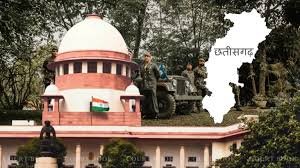Why in the News?
- The origins of the modern Ganesh Chaturthi festival are being discussed in light of its historical links with colonial policies, communal tensions, and Bal Gangadhar Tilak’s political role.
- The festival, celebrated on a grand scale across India today, actually took shape in Poona in 1894 as a public substitute for Moharram processions.
- Its history shows how a cultural practice grew into a mass festival and tool for social-political mobilisation, making it relevant for debates on religion, politics, and nationalism in India.
Key Highlights
- British colonial order creates unease (May 1894).
- Governor George Robert Canning Harris, also a former England cricket captain, issued a directive: Hindus should stop playing music while passing mosques.
- No such rule was applied to Muslims passing temples.
- This one-sided order was seen as unfair and biased, planting seeds of communal resentment.
- The Palkhi clash in Poona (July 1894).
- The palkhis (palanquins) of the saint-poets Dnyanoba and Tukaram entered Poona.
- At Ganesh Peth, near a dargah, stones were thrown at a drummer in Tukaram’s Palkhi.
- A scuffle broke out, and Hindu newspapers like Kesari reported that Muslims had attacked the procession.
- This event was seen by many Hindus as an insult to their religion and further increased tensions.
- Moharram, Tabuts, and the cultural gap.
- For years, Hindus actively took part in Moharram processions called Tabuts.
- These processions had drums, music, dancing, and ended with immersion of the Tabuts in rivers or the sea.
- After the Palkhi incident, regional newspapers such as Poona Vaibhav, Mumbai Vaibhav, Indu Prakash, Kalpataru and others advised Hindus to boycott Moharram.
- Handbills pasted on temples repeated the same message.
- This boycott left a cultural vacuum: Hindus missed the festive atmosphere of music, dance, and public gatherings.
- Birth of the modern Ganesh festival (July–Sept 1894).
- Newspapers suggested Hindus should start their own public festival.
- Soon, preparations began for a grand Ganesh Chaturthi with big idols, decorative mandaps, and music bands, modelled on Moharram Tabuts.
- On 13 September 1894, Ganesh idols were taken out in processions and immersed publicly.
- The Times of India reported the next day that large and imposing Ganpati idols were now being displayed, unlike the small private ones of the past.
- In short, Ganesh Chaturthi was not new, but in 1894 it changed into a public, community-wide celebration.
- Tilak’s role and the political significance.
- Bal Gangadhar Tilak, through his papers Kesari (Marathi) and The Mahratta (English), encouraged the new form of Ganesh Chaturthi.
- Tilak believed that a strong nation required:
- A common religion,
- Common laws, and
- A common language.
- The British had already given laws and English, but Tilak felt religion could unite Indians.
- The festival brought together the “lower classes” and elites, creating unity beyond caste and class.
- Although it wasn’t originally an anti-British festival, it became a platform for mass mobilisation and sowed the seeds of cultural nationalism.
- Legacy and myths.
- Many later believed the festival was started by Tilak as an anti-colonial movement, but that is not entirely true.
- In reality, it was born as a Hindu substitute for Moharram, shaped by newspapers and community choices.
- Over time, it grew into a symbol of Hindu unity and national pride, spreading across India.
- Ironically, the same Governor Harris, whose policy triggered this, is still remembered in Mumbai through the Harris Shield cricket tournament.
Implications
- Colonial policies led to unexpected outcomes.
- A small rule about playing music created resentment and, indirectly, a new festival tradition.
- This shows how deeply government orders could affect community life.
- Religion became a medium of politics.
- Ganesh Chaturthi united different sections of Hindus, giving leaders like Tilak a ready audience.
- It allowed politics to move from the elite Congress halls into the streets and public spaces.
- Newspapers shaped public opinion and action.
- Vernacular papers did more than report events: they told people what to do; boycott Moharram, start Ganesh celebrations.
- This shows how print culture created mass action in the 19th century.
- Festivals created community identity but also boundaries.
- Ganesh Chaturthi gave Hindus a sense of unity and pride.
- But it also deepened Hindu-Muslim separation, as Moharram participation declined.
- Myths influence historical memory.
- The idea that Ganesh Chaturthi was purely anti-colonial is a simplified myth.
- Understanding the real origins is important to avoid misuse of history for present-day politics.
Challenges and Way Forward
| Challenge | Why it matters | Short-term steps | Long-term steps |
| Communal tension | The festival began in a communal context, and processions can still cause clashes. | Arrange interfaith talks before festivals; quick conflict-resolution teams. | Build permanent interfaith forums, cultural exchanges, and shared use of public spaces. |
| Historical myths | Simplified stories hide the real complexity of history. | Share accurate articles and talks during festivals. | Include nuanced accounts in schoolbooks, museums, and cultural centres. |
| Political misuse | Leaders often use religious festivals for votes. | Ban speeches, posters, or campaigning during processions. | Strengthen laws and civic norms separating religion and politics. |
| Environmental issues | Big idols and immersions pollute rivers/lakes. | Promote eco-friendly idols, artificial tanks, and awareness drives. | Train artisans in eco-materials and build permanent sustainable systems. |
| Loss of traditional artisanship | Commercialisation hurts small idol-makers. | Provide subsidies, stalls, and direct market access during festivals. | Year-round support, skill training, and certification for artisans. |
Conclusion
The modern Ganesh Chaturthi festival, which we see today with large idols and public processions, was born in 1894 in Poona. It was not originally planned as an anti-British movement, but as a replacement for Moharram after communal clashes and colonial interference. Newspapers, local enthusiasm, and Tilak’s leadership transformed it into a symbol of unity and cultural nationalism. Over time, it helped bring ordinary people into the political space, making it a landmark in Indian public life. At the same time, its origins remind us of the dangers of communal divides and the power of media in shaping society. Today, the festival continues to be a source of pride, but it also needs careful management, socially, environmentally, and politically, to keep its unifying spirit alive.
| Ensure IAS Mains Question Q. “The origins of the modern Ganesh Chaturthi festival highlight how colonial policies, communal tensions, and cultural adaptation shaped mass politics in India.” Discuss. (150 words) |
| Ensure IAS Prelims Question Q. With reference to the origins of the modern Ganesh Chaturthi festival, consider the following statements: 1. The public celebration of Ganesh Chaturthi in Poona began in the year 1894. 2. It was started as a substitute for the Moharram Tabut processions after communal tensions. 3. Bal Gangadhar Tilak was the first to introduce Ganesh Chaturthi in India as an anti-British movement. Which of the above statements is/are correct? a) 1 and 2 only b) 2 and 3 only c) 1 and 3 only d) 1, 2 and 3 Answer: a) 1 and 2 only Explanation: Statement 1 is correct: The modern public form of Ganesh Chaturthi (with large idols, decorated mandaps, and processions) began in Poona in 1894. Earlier, it was mostly a private household festival. Statement 2 is correct: After the Palkhi clash of July 1894, newspapers urged Hindus to boycott Moharram processions. To fill the cultural gap, Hindus organised a public Ganesh festival in a style similar to Moharram Tabuts. Statement 3 is incorrect: Tilak supported and popularised the festival, but it was not originally started as an anti-British movement. The immediate reason was the boycott of Moharram; Tilak later gave it a political and nationalist meaning. |




